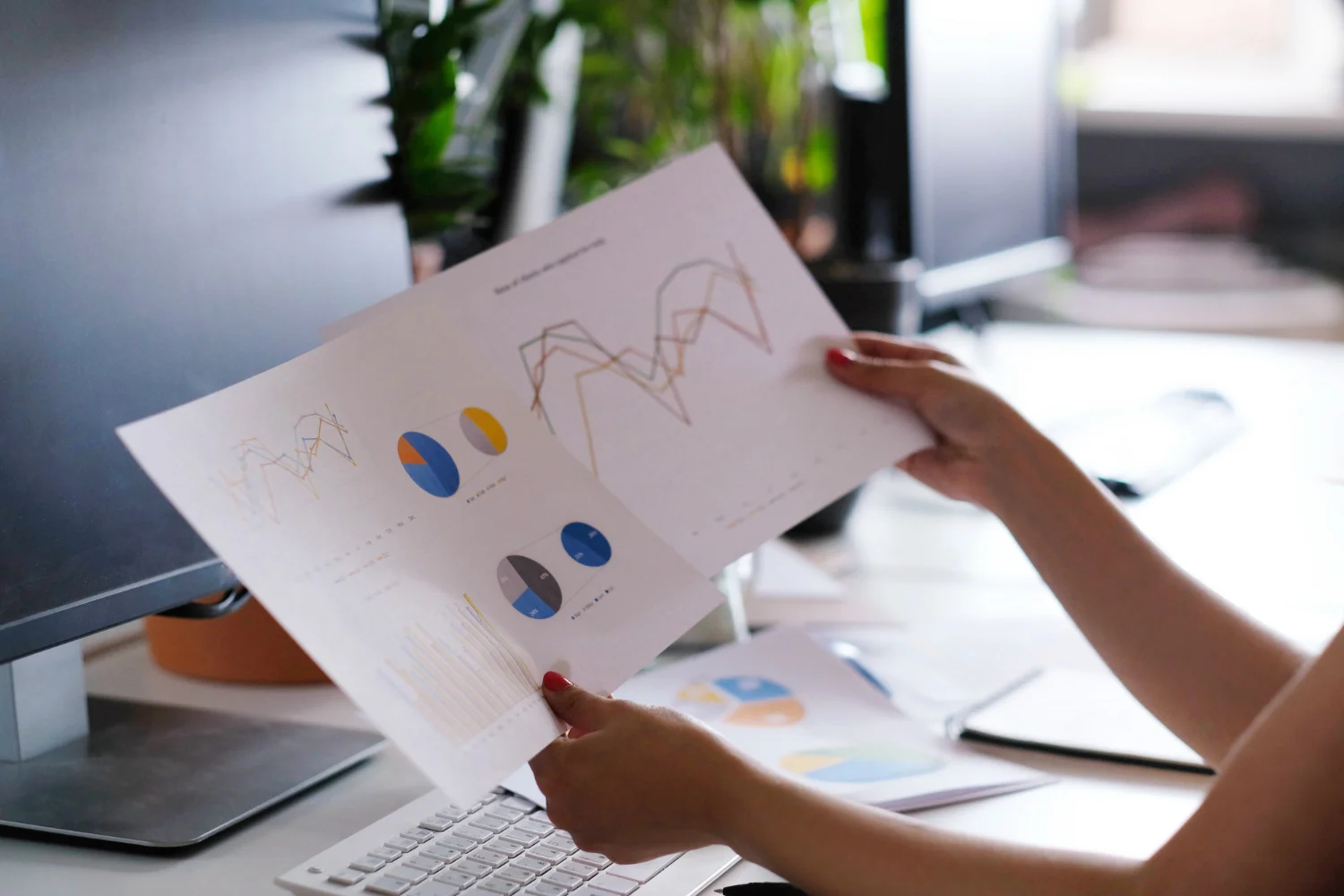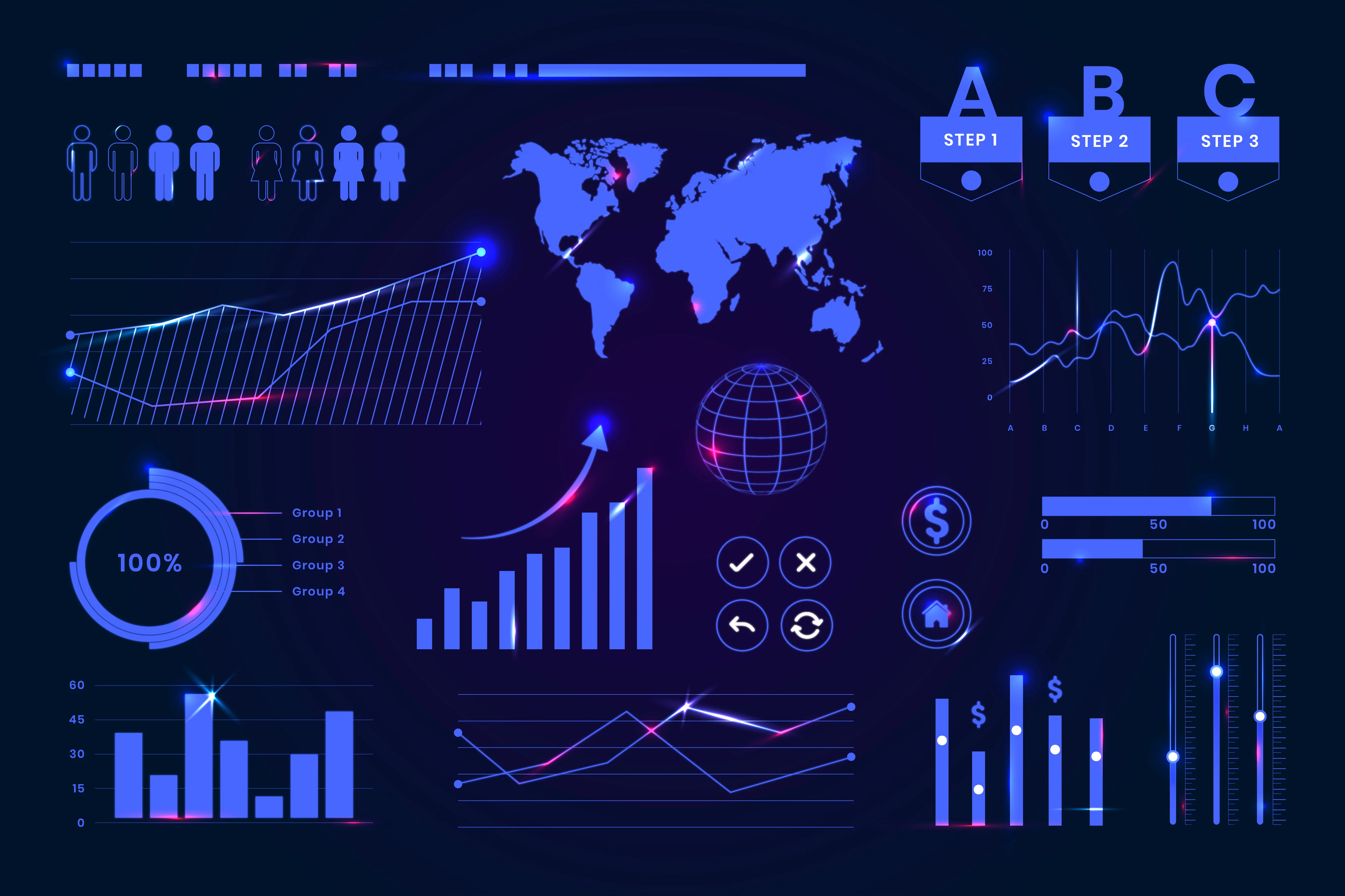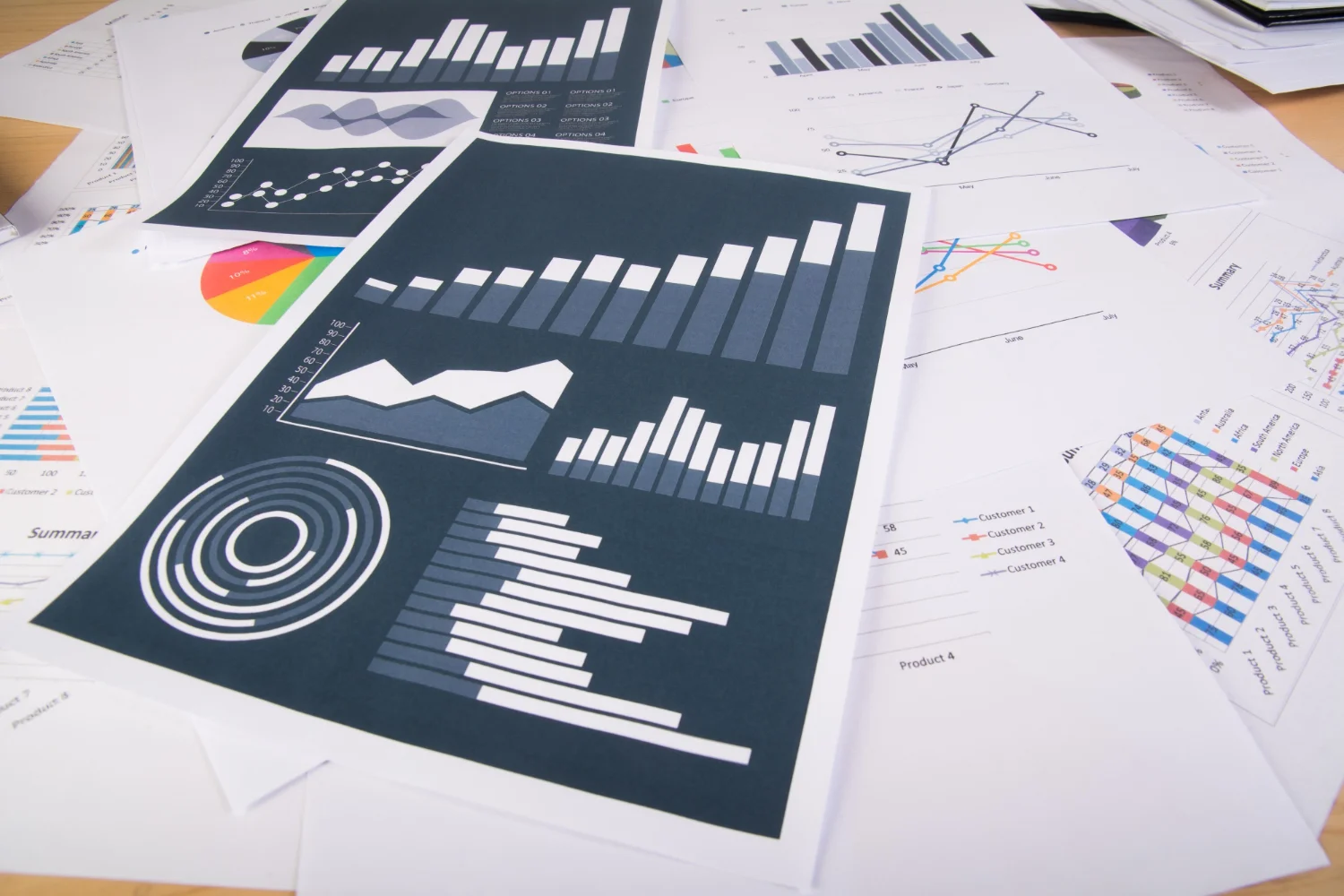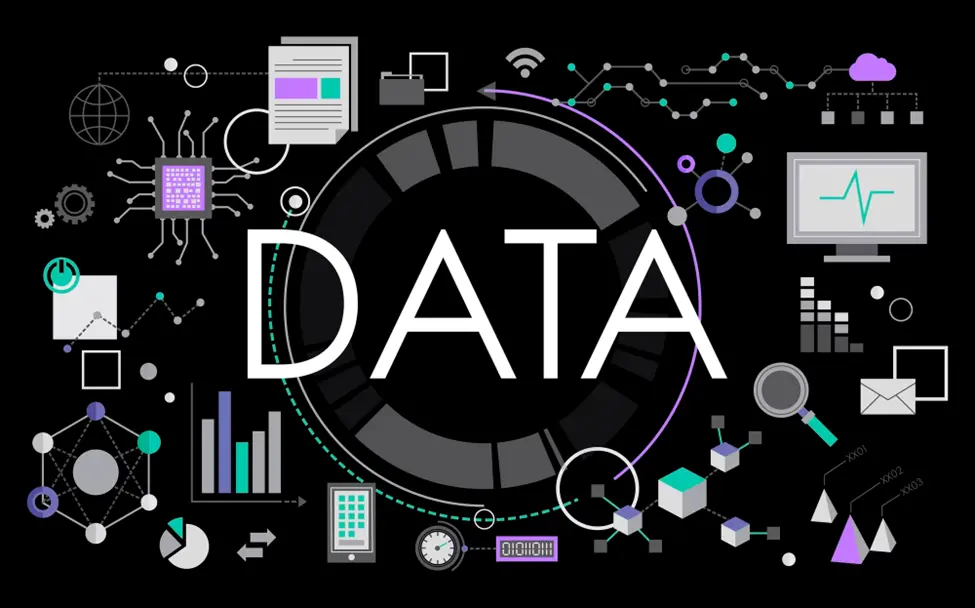Businesses do not feel the lack of data these days. On the contrary, you can get access to plenty of raw information in mere days or even hours. However, the true value of data lies not in its volume, but in the insights you glean from it. The ability to drive conclusions from raw chunks of information looks incomplete without statistical analysis methods.
By the end of this article, you’ll get familiar with methods for data statistics analysis. You’ll also discover what roadblocks you may face on your way and get familiar with best practices. Let’s get into this.
What is statistical data analysis?
At its heart, statistical analysis is about deciphering, scrutinizing, and distilling data. With this method, you can make sense of the volumes of information based on solid empirical evidence. What’s in it for you? A surge in operational efficiency, a deeper understanding of your market, and a sharp edge over your competitors.
Statistical data analysis possesses several distinct features that make it a valuable tool for any data-driven organization:
- Effective summary of large datasets
- Identification of patterns and correlations among different variables within a dataset
- Extraction of actionable insights from raw, complex data
- Forecasting of future trends, behavior, or outcomes based on historical data
- Validation of certain assumptions or hypotheses
- Detection of outliers or anomalies in datasets
- Management and simplification of complex, multidimensional data
Methods for statistical data analysis in big data
Descriptive statistics and exploratory data analysis
Given the complexity and variety of big data, you need a solid ground to start. Descriptive and exploratory data analysis methods for statistical analysis provide a firm footing for capturing insights from raw information.
Descriptive statistics provides a quantitative summary of your data. Want to know the average sales of your business last month? Or the most common product sold? Descriptive analysis is your go-to method. With this approach, you grasp central tendencies, spread, and variation in your data. It usually includes the following measures:
- Mean is calculated by adding all the data points together and then dividing by the number of data points
- Median is the middle value in a dataset.
- Mode is the most frequently occurring value in a dataset.
- Standard deviation is a measure of the amount of variation or dispersion in a set of values.
Exploratory data analysis (EDA) takes things a step further. It involves visualizing the data and conducting more sophisticated analyses. With this method, you reveal patterns, relationships, or anomalies that may not be apparent with traditional descriptive statistics.
Inferential statistics and hypothesis testing
When dealing with big data, inferential analysis and hypothesis testing are invaluable. These statistical methods for big data analysis let you dive deeper into your data to make predictions and test assumptions.
Inferential statistics takes your analysis beyond the data at hand. Once you’ve gleaned insights from your existing data, but what about predictions for future scenarios or insights about a larger population? That’s exactly what inferential statistics can help you with. For instance, you may drive conclusions about the whole group based on data from a small sample.
Hypothesis testing complements an inferential method and gives your analysis a direction. It allows you to test the assumption statistically. This approach provides a framework to either support or reject your hypothesis based on the data evidence.

Predictive modeling and machine learning
Predictive modeling and machine learning are sophisticated big data statistical methods for foreseeing the future.
Predictive modeling, as the name suggests, is all about forecasting. Most often, the model is based on the correlation between the variable you want to predict and other variables in your data. For instance, a predictive model could help you forecast future sales based on past performance and other influencing factors such as seasonal trends or marketing efforts.
Machine learning algorithms automatically learn patterns in data and make decisions with minimal human intervention. This approach is particularly valuable with big data when manual processing can be difficult if not impossible. This method will help you spot patterns you might not even know to look for.
Time series analysis and forecasting
If you deal with data points collected at regular intervals, like monthly sales, daily website traffic, or annual revenue, you’ll benefit from time series analysis and forecasting.
Time series analysis is a method of statistical analysis for decoding patterns over time. Whether it’s identifying seasonal fluctuations in your sales, detecting consistent growth in your user base, or spotting anomalies in your website traffic, time series analysis can do it all. It turns your historical data into a revealing timeline to provide you with a comprehensive view of your past performance and current trends.
Forecasting, on the other hand, leverages these trends and patterns to predict future outcomes. If time series analysis is about understanding the past and present, forecasting is about glimpsing into the future. It guides your strategic planning and lets you predict anything from next quarter’s sales to market trends.
Challenges in statistical data analysis of big data
The increasing volume, velocity, and variety of big data for statistics analysis may introduce a few hurdles on your way to obtaining impactful insights.
- Scalability & computational efficiency. Traditional data analysis tools may struggle to handle increasing data volumes without compromising the speed or accuracy of analysis, both in terms of storage and computational power.
- Data quality & cleaning. Big data often arrives in raw, unstructured forms. It may contain errors, inconsistencies, or missing values that can skew your analysis. Given the enormous amount of information, data cleaning can be incredibly time-consuming and complex.
- Privacy & ethical considerations. Big data often involves personal or sensitive information. Safeguarding this data can present a significant challenge. Also, businesses need to ensure their data practices comply with privacy laws and ethical standards.
- Interpretability & explainability. With more advanced methods like machine learning, it’s getting harder to analyze statistical data. While these models provide powerful insights, the ‘black box’ nature of some algorithms makes it challenging to understand how they arrived at a particular prediction or decision. This lack of transparency can be problematic, especially for industries where explainability is important for trust and compliance.

Best practices for effective statistical data analysis
Harnessing big data is no small feat. It requires an adept approach to statistical data analysis, where careful planning meets efficient execution. To help you navigate this process, here are some best practices on how to analyze statistical data more effectively.
1.Make sure data meets your objectives
Before data collection, define what you want to achieve with your analysis. Think of what information will answer your questions and where you may find one. This step will help you spot the best potential sources of variability for the utmost results.
2.Invest in data cleaning
Don’t skip data wrangling. Clean data for errors, format variables, and delete duplicate variables to set up data for the analysis. Why should you take this step seriously? Here are a few figures:
- 25% or more of revenue is subjected to data quality issues.
- 82% of data analytics projects have had to be reworked because of poor data.
- Poor data is responsible for $15 million per year in losses.
- Because of improper data, 76% decision makers say that they miss out on revenue opportunities, while 72% admit that it negatively impacts customer engagement.
3.Add variable & value labels
To simplify reading your output, consider adding variable and value labels. The label may display what each variable measures or what category each code represents.
4.Iterate & validate your models
Data analysis is an iterative process. Regularly validate your models against new data, and be prepared to refine them as needed. This continuous improvement will enhance the accuracy and reliability of your insights.
5.Keep a version history of files
Keep track of what changes you make and when. This may help you when working on future products or while troubleshooting. A good tip is to name and date your syntax and output files the same way.
6.Have separate files for each outcome
As you use smaller files for each outcome, it’ll be easier for you to find a particular analysis later or make global changes.
7.Ensure privacy & ethical compliance
Always consider privacy and ethics in your data practices. Anonymize sensitive data, obtain necessary permissions, and ensure your practices are compliant with prevailing laws and regulations.
Conclusion
Statistical data analysis has a range of methods available, each with its unique strengths — from descriptive statistics that provide a quick overview, to machine learning algorithms that predict future trends. Whichever works for your business depends totally on your objectives and the resources at hand.
If you need qualified assistance with statistical data analysis, Nannostomus is here to help you unveil patterns, predict outcomes, and guide your strategic decisions. Contact us to learn what we can do for you today.




